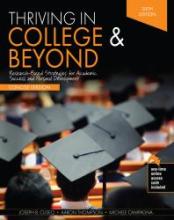Global Enterprise: The Theory & Practice of International Business
By: Eugene Paul Kim, Roger Philips, Stanley Klatka, Jonathan Opata, Virginia A Suveiu, Robert Austin
about product
Global Enterprise: The Theory & Practice of International Business
Author(s): Eugene Paul Kim, Roger Philips, Stanley Klatka, Jonathan Opata, Virginia A Suveiu, Robert Austin
Global Enterprise – Theory and Practice is a multi-authored textbook on international business providing an alternative to the standard, bland, encyclopedic international business textbooks on the market today. The emphasis here is on teaching students usable skills and knowledge in the context of ...Project Management for the Hospitality Industry
Author(s): Timothy Flohr, William Duncan, Catherine Curtis
Though Project Management consistently ranks as the one of the most sought-after certifications throughout multiple industries, many mistakenly think that Project Management is limited to the information technology, finance and insurance, manufacturing, and construction industries. Interestingly, th...about product
Thriving in College and Beyond: Research-Based Strategies for Academic Success and Personal Development: Concise Version
Author(s): Joseph B Cuseo, Aaron Thompson, Michele Campagna
Thriving in College & Beyond: Research-Based Strategies for Academic Success and Personal Development covers the full range of topics and issues that impact student success. Content is delivered through a variety of educational formats and learning modalities, including snapshot summaries, concept m...The Dark Web: Unfiltered
Author(s): Scott H. Belshaw
In The Dark Web: Unfiltered, Dr. Scott Belshaw takes you into an online world that very few have encountered. This book serves as a proverbial travel guide into the sick and twisted side of the dark web, including hidden coves for illegal activity. These areas include the dark web drug scene, hiring...about product
Thriving in the Community College and Beyond: Research-Based Strategies for Academic Success and Personal Development
Author(s): Joseph B Cuseo, Aaron Thompson, Julie McLaughlin
Thriving in the Community College & Beyond covers the full range of topics and issues that impact student success. Content is delivered through multiple formats and learning modalities, including snapshot summary boxes, concept maps, content-relevant cartoons, inspiring quotes from successful studen...Geology of National Parks
Author(s): David A. Foster, David Hacker, Ann G Harris
The National Parks of the United States preserve our nation's iconic landscapes and some of the finest examples of geologic heritage. From glaciers to caves, volcanoes to canyons, or mountains to coral reefs, the nation's geologic features and landforms have been an important part of the American ex...Reading the Web: Strategies for Internet Inquiry
Author(s): Elizabeth Dobler
Reading the Web: Strategies for Internet Inquiry outlines web literacy in a user-friendly way that helps educators provide students with practical skills and strategies needed to approach the internet with discernment. One of the ways it accomplishes this is through the QUEST model: questioning, und...about product
The Need for Weed: Marijuana Policy and Public Politics in the Criminal Justice System
Author(s): Kellie A. Wallace, Scott H. Belshaw, Jared R. Dmello
Cannabis is everywhere! Whether you call it weed, pot, or marijuana, cannabis by any other name is still cannabis. From your stereotypical street drug dealer to medical cannabis dispensaries to courtrooms across America, we cannot escape the hot buzz that is weed. While it may be hot, it is nothing ...Algebra for Calculus: A Guided Inquiry
By: The POGIL Project, Catherine Bénéteau, Zdenka Guadarrama, Jill E. Guerra, Laurie Lenz, Andrei Straumanis
about product
Algebra for Calculus: A Guided Inquiry
Author(s): The POGIL Project, Catherine Bénéteau, Zdenka Guadarrama, Jill E. Guerra, Laurie Lenz, Andrei Straumanis
These guided activities were written because much research has shown that more learning takes place when the student is actively engaged and when ideas and concepts are developed by the student, rather than being presented by an authority - a textbook or an instructor. The activities presented are s...History and Tradition of Jazz
Author(s): Thomas E Larson
History and Tradition of Jazz is not just a story of jazz music and musicians, but the struggle to achieve, create, and invent for the sake of this musical art form. The publication features stories and legends of important events and people who shaped jazz history, while addressing how the music h...







